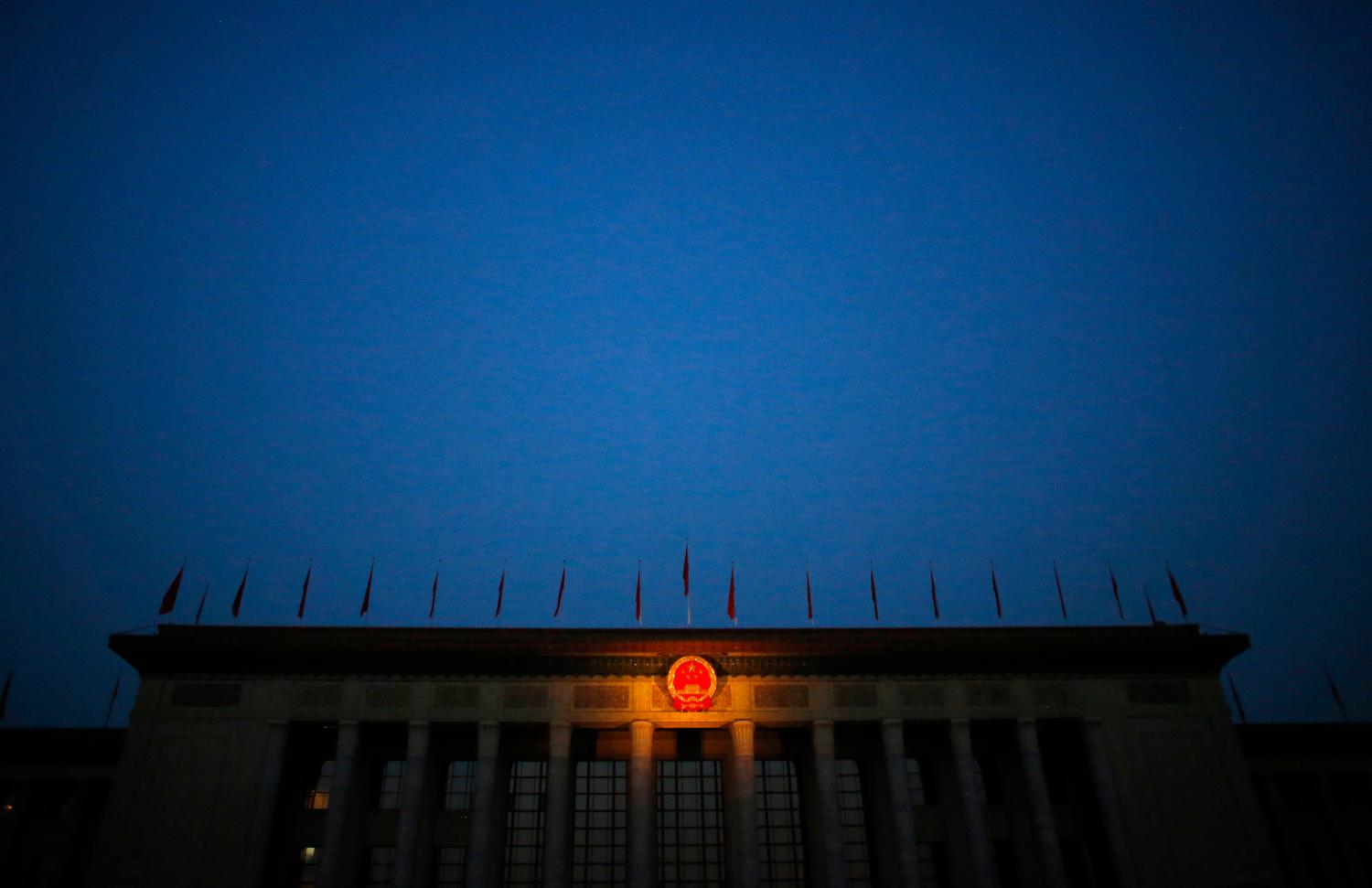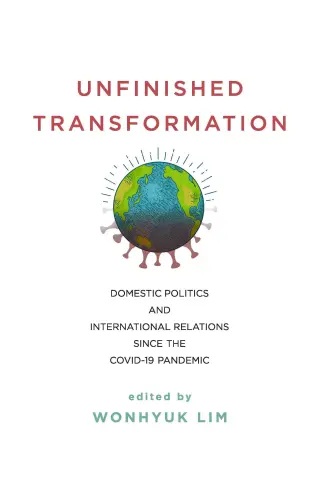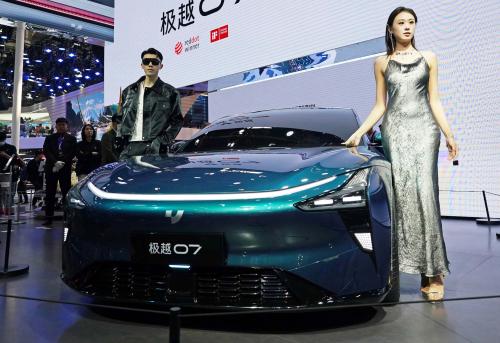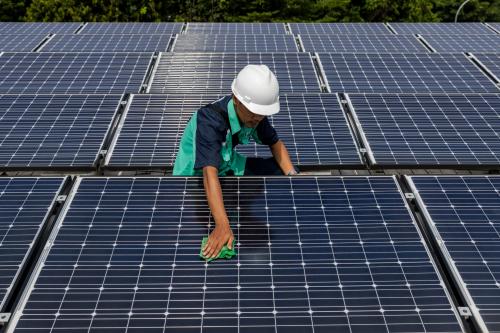 Low-carbon energy technologies are surging, and that’s due to China’s desire to make a buck. A decade ago, solar and wind power ballooned from regional oddities into international businesses, a transformation fueled by China’s push to corner a fledgling industry. Today, renewables are among the fastest-growing global energy sources, driven significantly by the latest advance in China’s push for profit: a national focus on assembling gargantuan infrastructure projects beyond China’s borders, in dozens of developing countries, from Pakistan to Peru.
Low-carbon energy technologies are surging, and that’s due to China’s desire to make a buck. A decade ago, solar and wind power ballooned from regional oddities into international businesses, a transformation fueled by China’s push to corner a fledgling industry. Today, renewables are among the fastest-growing global energy sources, driven significantly by the latest advance in China’s push for profit: a national focus on assembling gargantuan infrastructure projects beyond China’s borders, in dozens of developing countries, from Pakistan to Peru.
The enduring strength of the clean-energy market, and China’s central role as that market’s maker, are worth noting at a time when the coronavirus has slashed overall energy demand and has ratcheted up geopolitical tensions between the Chinese and U.S. governments to a level not seen in decades. But neither the global clean-energy push nor China’s role in it is adequate to stave off dangerous climate change. There is a better way.
For the United States, whose global influence has tanked but can recover, it involves an adult approach to the energy and environmental initiatives of China and of myriad developing countries — an approach based not on easy jingoism but on hard facts. The first step is understanding that the trajectory of climate change will depend on decisions about the sort of infrastructure that Chinese entities fund abroad— and that those decisions result not from omnipotent fiat in Beijing but from complex debates throughout China and across the countries in which Chinese entities are writing checks. The next step — particularly since the United States seems unlikely to radically increase its own global-infrastructure financing, regardless of who wins the November presidential election — is for the United States to re-engage abroad on climate-related matters with sophistication rather than sophistry. That re-engagement should seek to shift financial incentives toward lower-carbon infrastructure, both for Chinese investors and for their clients across the globe. This approach would benefit not only the Earth, but also, and more practically, U.S. investors.
Chinese money and the planet
Like most organisms, China is a paradox. It remains the world’s largest coal-burner1 even as it is the biggest producer of renewable-energy technology and of renewable energy itself.2 Like the rest of the world, China still produces the overwhelming majority of its energy by burning fossil fuels, not by harnessing Mother Nature’s gauzier gifts. (In 2018, fossil fuels provided 88% of the energy used in China and 81% of the energy used globally, according to the International Energy Agency, or IEA. The likely numbers for 2040, the IEA says, are 76% in China and 74% globally.3) China’s ramp-up of clean energy over the past several years has been simultaneously fruitful and fitful. Its foreign-infrastructure-financing push massively raises the global economic and environmental stakes of China’s still-nascent clean-energy shift.
Beijing, along with various Chinese provinces and hundreds of state-owned and private Chinese firms, is bankrolling and building everything from power plants to factories to electric-transmission lines across a swath of the planet that, according to the World Bank, comprises nearly two-thirds of its people and about one-third of global gross domestic product.4 Whether that Chinese-financed infrastructure is high-carbon or low-carbon — what level of emissions the projects lock in for decades to come — will, more than any other set of policies at play in the world today, determine the future both of the global fossil-fuel-based economy and of global warming.
Hanging in the balance are the fortunes of some of the planet’s biggest corporations — firms that dominate sectors from power to oil to automobiles. Also hanging in the balance, as climate change intensifies, is the planet itself.
China’s foreign infrastructure-building campaign, a policy push that President Xi Jinping announced in 2013, typically is dubbed the Belt and Road Initiative. In practice, the moniker tends to amount to little more than a marketing slogan. Actors in and out of China commonly disagree about which infrastructure projects are part of it and which are not; indications are that the projects in it are those that China and host countries want, for their own political reasons, to trumpet. Whatever it’s called, China’s foreign-infrastructure building boom has prompted profound geopolitical, economic, and environmental concerns. The debate boils down to the same conundrum over China’s motives that has preoccupied outsiders for decades: Hegemon or helper? Communist or capitalist? And now: Dirty or clean?
In the United States, resistance to China’s foreign-infrastructure campaign comes from leaders on both sides of the political aisle. Much of the American right views the Chinese push as a threat to U.S. geopolitical influence and economic reach. Much of the American left sees China as a global polluter. The left posits that, though China is reforming its smoke-spewing ways, primarily to reduce smog above its cities, it isn’t doing so nearly fast enough to meaningfully curb China’s outsized contribution to global carbon emissions, and it isn’t applying the same rigor to cleaning up what it builds in other countries as it is to what it builds at home. The United States is not alone in leveling such criticism; similar debates over China’s actions are playing out in most major industrialized economies, not to mention in many of the developing countries receiving large amounts of Chinese infrastructure money.
The carbon footprint of the foreign energy infrastructure China is financing is existentially important. If countries that have signed on to the Belt and Road Initiative develop their infrastructure on a business-as-usual path, by 2050 they will account for two-thirds of global emissions, according to a 2019 study by Tsinghua University and London-based consultant Vivid Economics.5 Those global emissions, moreover, will be double the level that would trigger a rise in average global temperatures of 2 degrees Celsius above pre-industrial levels, the threshold below which scientists agree it is necessary for the world to stay to avoid particularly dangerous consequences from climate change. That will happen, the study found, even in the exceedingly improbable event that the rest of world somehow gets green religion and swings its development onto a significantly more-sustainable path.6 The upshot: Curbing climate change requires greening China’s foreign-infrastructure financing.
It’s not just China
Most analyses of the environmental effects of Chinese spending on foreign infrastructure focus on the aggregate effects. They conclude with concern that China is financing more fossil-fueled than renewable energy. That may indeed be concerning, but, as some of the studies themselves note, it’s hardly surprising.7 For all of renewable energy’s torrid growth in recent years, fossil fuels remain by far the largest global energy source.
The practical question isn’t just whether Chinese money is building more dirty-energy infrastructure than clean-energy infrastructure. It’s whether Chinese money is building dirtier infrastructure than non-Chinese money is building — and why.
The practical question isn’t just whether Chinese money is building more dirty-energy infrastructure than clean-energy infrastructure. It’s whether Chinese money is building dirtier infrastructure than non-Chinese money is building — and why. Research underway at Stanford, where I work, is endeavoring to illuminate that.9 Rather than tallying aggregate Chinese fossil-fuel-versus-renewable investments — because, at least broadly, existing research has calculated that— the work seeks to compare the carbon intensity of infrastructure financed by Chinese players with that of infrastructure financed by multilateral, bilateral, and other non-Chinese entities. One goal is to determine whether Chinese investment is making these countries’ energy systems more or less carbon-intensive than they would be absent the Chinese funding. Another is to illuminate why key developing countries that previously relied largely on Western sources for infrastructure finance are now looking to China for much of that money. This research is designed to reflect the way that global infrastructure funding actually works, politically and economically — and thus to elucidate particularly realistic ways to meaningfully decarbonize Chinese infrastructure financing.
The research is in its early stages. But it already clarifies the way decisions are made about what sort of energy infrastructure gets built with Chinese financing. The decisions are not, as many China critics in the West suggest, the result of some supreme order issued in Beijing. They are messier, and thus more malleable, than that. They depend, in particular, on two things.
For one thing, they depend on an ever-shifting balance of power inside China between opposite camps in what amounts to the mother of all energy-system transitions. On one side is China’s old-energy lobby, the shrinking but still-massive juggernaut invested in the continuation of an economy powered largely by coal: mining it, transporting it, and building and operating the massive machinery that burns it. This camp is largely government-controlled, run by many of the massive state-owned enterprises that have dominated China’s economy for decades. On the other side is the new-energy lobby, the growing but still-smaller constituency that earns its money by making, selling, and operating everything from solar panels to wind turbines to batteries to electric cars. This group includes prominent private firms founded in the last decade or so by entrepreneurs and widely traded on Western stock exchanges, which is to say owned by investors around the globe. The fight between the high-carbon and low-carbon energy camps is, to be sure, a battle among industries, among companies, and among government ministries. Increasingly and crucially, though, as the economic case for renewables grows more compelling, it also is a fight within each of those institutions. That is because advocates of a clean-energy shift are emerging even inside entities that for years have made their money from dirty energy.
These fights over decarbonization are playing out in many countries, particularly in the most economically powerful ones, notably the United States, Germany, Japan, and Australia. What is different in China is, as always, size: the scale of the energy market, the speed of the push by massive domestic companies to export energy machinery, and, thus, the stakes.
In addition, just as decisions about the carbon intensity of the energy infrastructure China finances internationally depend on a power struggle underway within China, they depend on the priorities of the countries ordering up the Chinese-financed projects. Countries that have articulated more ambitious decarbonization policies tend to get Chinese financing for greener infrastructure. Countries with policies pushing coal, on the other hand, typically find that China is quite happy to help them pay to extend the overhang of that rock. Individual Chinese institutions — literally, in some cases, the same Chinese banks — are funding coal-heavy infrastructure portfolios in some countries and renewables-heavy portfolios in others. In other words, to a meaningful extent, the customer gets what the customer wants. Dirty begets dirty, and clean begets clean.
What Washington should do
All of which suggests a way forward for the United States amid the coronavirus-related cratering of political relations between Beijing and Washington and given the imperative to act meaningfully on climate change. Trying to block China’s foreign-infrastructure investment would be foolish, both because China has strategic and economic motives for that spending and because the United States shows little appetite for such spending itself. Berating the Chinese government to go greener, either in what it builds at home or in what it finances abroad, also is unlikely to work — not least because China, despite its continued reliance on coal, arguably is already doing more to decarbonize the planet than any other sizable economy is doing. More sensible would be for the United States to help the many players that already have signaled an interest in making money by shifting to lower-carbon paths — players both in China and in the host countries in which China is financing infrastructure — figure out practical ways to intensify those shifts.
That would require Washington to reengage across multiple dimensions with policymaking designed to shift financial incentives toward lower-carbon investments. In global financial markets, it would mean supporting a host of measures to force greater corporate disclosure of risks to investors from climate change. In international diplomacy, it would mean working with the countries whose emissions are growing fastest — key emerging economies — both to raise the ambition of their carbon-cutting political pledges and, more importantly, to roll out domestic policies that incentivize cleaner infrastructure investments within their borders. It wouldn’t hurt if the United States did more to curb its own emissions; that would raise America’s moral standing as a global environmental actor. But do not be deluded. Decarbonization no longer is mostly about the United States; it’s largely about China’s financing of infrastructure in developing nations. And it never was really about morality; it is, and it always has been, mainly a question of money.
-
Footnotes
- “Global Coal Consumption is Being Driven By Developing Countries,” IEA Clean Coal Centre, July 21, 2020, https://www.iea-coal.org/global-coal-consumption-is-being-driven-by-developing-countries/.
- “Country Rankings,” International Renewable Energy Agency, https://www.irena.org/Statistics/View-Data-by-Topic/Capacity-and-Generation/Country-Rankings.
- “World Energy Outlook 2019,” (Paris: International Energy Agency, 2019), 678, 730, https://www.iea.org/reports/world-energy-outlook-2019.
- Michele Ruta, “Three Opportunities and Three Risks of the Belt and Road Initiative,” World Bank, May 4, 2018, https://blogs.worldbank.org/trade/three-opportunities-and-three-risks-belt-and-road-initiative.
- Ma Jun, Simon Zadek, Tianyin Sun, Shouqing Zhu, Lin Cheng, Jason Eis, Thomas Nielsen, David Ren, Ilmi Granoff, and Tim Stumhofer, “Decarbonizing the Belt and Road: A Green Finance Roadmap,” (Beijing: Tsinghua Center for Finance and Development, September 2019), https://www.vivideconomics.com/casestudy/decarbonizing-the-belt-and-road-initiative-a-green-finance-roadmap/.
- Ibid.
- There is a rich and growing literature assessing the environmental effects of China’s foreign-infrastructure investments. Of particular note is the work of Kevin P. Gallagher, of Boston University’s Global Development Policy Center, and his colleagues. See, in particular Bo Kong and Kevin P. Gallagher, “Chinese development finance for solar and wind power abroad,” (Boston: Global Development Policy Center, Boston University, https://www.bu.edu/gdp/files/2020/02/WP9-Kong-Bo-inc_abstract-1.pdf, which deepens analysis launched in prior years, including the finding that, of financing for global energy projects between 2000 and 2018 by the China Development Bank and the Export-Import Bank of China, 74.6% went to fossil-fuel projects and 1.4% went to renewable-energy projects. See also Lihuan Zhou, Sean Gilbert, Ye Wang, Miguel Muñoz Cabré, and Kevin P. Gallagher, “Moving the Green Belt and Road Initiative: From Words to Actions,” (Washington, DC: World Resources Institute, November 2018), https://www.wri.org/publication/moving-green-belt-and-road-initiative-from-words-to-actions, which reports that, between 2014 and 2017, of $25.7 billion in syndicated loans that six Chinese banks provided for electricity-generation and electricity-transmission projects in 32 Belt and Road Initiative countries, $13.9 billion went to fossil-fuel projects and $9 billion went to renewable-energy projects. The vast majority of that renewable-energy slice, $6 billion, went to hydropower projects, and just $1.4 billion went to solar and wind projects, the technologies many people focus on when they think of renewable energy.
The Brookings Institution is committed to quality, independence, and impact.
We are supported by a diverse array of funders. In line with our values and policies, each Brookings publication represents the sole views of its author(s).







Commentary
The climate of Chinese checks: Easing global warming by greening Chinese foreign infrastructure investment
September 14, 2020